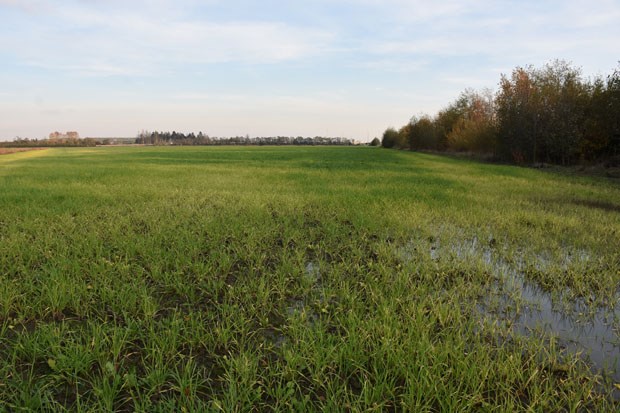Climate change over the coming years will continue to pose many challenges for society and farmers. It is projected that at current rates, local temperatures may increase by 1.7 to 4.5°C and sea levels may rise by one metre before the turn of the century.
Hotter, drier summers, increased precipitation over the winter months and increased pest pressures will require agriculture to adapt. Agriculture, however, has the opportunity to contribute considerably to reduce and even mitigate global greenhouse gas (GHG) emissions.
For decades now, farmers in Delta and Richmond have been committed to agricultural practices that have been identified as potential methods to mitigate GHG emissions.
“4 Per 1,000: Soils for Food Security and Climate” is an international initiative that could significantly reduce global CO2 emissions. Established in 2015, the initiative promotes a 0.4 per cent (“4 per 1,000”) growth rate of soil carbon per year to offset annual GHG emissions. The goal of the initiative is to promote farming practices that increase soil organic carbon sequestration which is the process of removing CO2 from the atmosphere and trapping it in the soil.
Farming practices that have the potential to increase soil organic carbon include cover crops, using composts and manures, perennial crops, grassland set-asides and hedgerows. Winter cover crops increase organic inputs as well as reduce soil erosion and nutrient leaching. In an analysis of studies across the globe, treatments that incorporate a cover crop were found to have significantly higher levels of soil organic carbon than treatments without cover crops.
‘Perennial grass forages and grassland set-asides generally sequester more carbon than annuals due to greater root biomass. In a study that analyzed 389 field trials, grasses were found to have the highest plant biomass production followed by cereals. In addition to the highest production of biomass, grasses also allocate the greatest proportion of carbon to their roots compared to other crops.
The study recommended that natural grasses and cereals be used as crops to sequester atmospheric carbon. Including perennial grass forages and/or grassland set-asides in crop rotations can contribute to greater carbon sequestration than annual crop rotations alone. Planting hedgerows has also been identified as a viable method to sequestering carbon
In addition to Delta Farmland & Wildlife Trust stewardship programs supporting wildlife and soil conservation, many of our programs may also contribute to mitigating GHG emissions on agricultural land. Through promoting the planting of winter cover crops, enhancing grass forage fields, incorporating grassland set-asides into crop rotations and planting hedgerows, the trust, in partnership with local farmers, is working to reduce GHG emissions and support the “4 per 1,000” initiative.
Learn more about our stewardship programs at our 14th annual Day at the Farm agricultural awareness event on Saturday, Sept. 7 from 10 a.m. to 4 p.m. at the Westham Island Herb Farm.
Drew Bondar is program manager for the Delta Farmland & Wildlife Trust.



